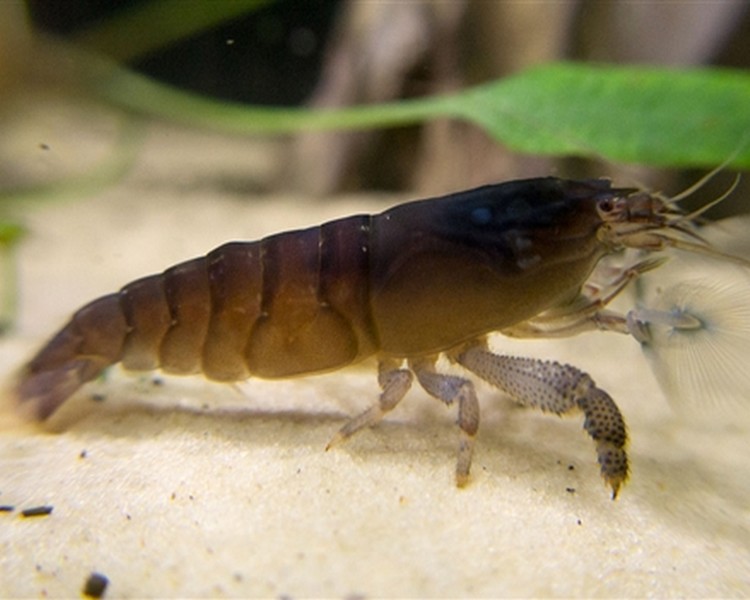Armored Shrimp
When thinking of shrimp, the image of a small, pink crustacean may come to mind. However, there are some species of shrimp that are anything but small and unassuming. Armored shrimp, for example, are a fascinating and unique type of shrimp that have captured the attention of many individuals around the world.
The Challenge of Armored Shrimp
For those who are not familiar with armored shrimp, they may perceive them as just another type of crustacean. However, there are some challenges that come along with armored shrimp that make them a topic of interest for many researchers and scientists. One of the main challenges of armored shrimp is their defense mechanism.
As their name suggests, armored shrimp have a tough, armor-like exoskeleton that protects them from predators. Unfortunately, this exoskeleton can also make it difficult for them to move around and search for food. Additionally, their strong defense mechanism can also make them more aggressive towards other aquatic creatures, which can disrupt the ecosystem of their habitat.
The Target of Armored Shrimp
Armored shrimp can be found in various locations throughout the world, from deep sea habitats to shallow ponds. They are particularly prevalent in areas with high levels of oxygen and moderate water temperatures. Additionally, they are a popular target for seafood enthusiasts due to their unique flavor and texture.
Summary of Main Points
Overall, armored shrimp are a fascinating and unique type of crustacean that have captured the attention of researchers and seafood enthusiasts alike. While they may present some challenges, such as their tough exoskeleton and potentially aggressive behavior, they are an important part of many aquatic ecosystems around the world.
The Benefits of Eating Armored Shrimp
As mentioned previously, armored shrimp are a popular target for seafood enthusiasts. Despite their tough exterior, they have a delicate and flavorful meat that is prized in many cultures. Additionally, they are a good source of protein and other essential nutrients.
Personally, I have had the pleasure of trying armored shrimp on a trip to Southeast Asia. The dish was prepared with a spicy sauce that perfectly complemented the shrimp's unique flavor. It was a great experience that introduced me to a new type of seafood that I would not have tried otherwise.
Furthermore, armored shrimp are known to have a low environmental impact compared to other types of seafood. They do not require large amounts of feed or space to grow, making them a sustainable choice for those who are concerned about the environmental impact of their food choices.
The Science of Armored Shrimp
Despite their relatively small size, armored shrimp have been the subject of numerous scientific studies. Some of the most notable areas of research include their unique defense mechanisms, their impact on aquatic ecosystems, and their potential for use in biomedical applications.
For example, researchers have discovered that the exoskeleton of armored shrimp contains a compound known as chitosan, which has numerous medical applications, including wound healing and drug delivery.
The Future of Armored Shrimp
As more research is conducted on armored shrimp, it is likely that even more benefits and uses will be discovered. Whether it is through new biomedical applications or sustainable seafood practices, the potential for armored shrimp is vast and exciting.
Question and Answer Section
Q: What are some common species of armored shrimp?
A: Some common species of armored shrimp include the Horned Shrimp (Paracrangon echinata), the Giant Mantis Shrimp (Odontodactylus scyllarus), and the Armored Shrimp (Glyphocrangon neglecta).
Q: Are armored shrimp safe to eat?
A: Yes, armored shrimp are safe to eat and are considered a delicacy in many cultures. However, as with any seafood, it is important to ensure that they are cooked properly before consumption.
Q: How does the exoskeleton of armored shrimp benefit them?
A: The exoskeleton of armored shrimp provides them with a strong defense mechanism against predators. Additionally, it can help protect them from physical damage, such as injuries from coral or rocks in their habitat.
Q: What is the potential for using armored shrimp in biomedical applications?
A: The chitosan found in the exoskeleton of armored shrimp has numerous medical applications, including wound healing and drug delivery. As more research is conducted, it is likely that even more uses for armored shrimp in the medical field will be discovered.
Conclusion
Armored shrimp are a unique and fascinating type of crustacean that have captured the attention of individuals around the world. Despite their tough exterior, they have a delicate and flavorful meat that is prized in many cultures. Additionally, they have numerous potential benefits and uses, from their low environmental impact to their chitosan-based biomedical applications. As more research is conducted, it is likely that even more discoveries will be made about the exciting potential of armored shrimp.
Gallery
#NationalShrimpDay Horned Shrimp (Paracrangon Echinata) Highly Armored

Photo Credit by: bing.com /
Armoured Shrimp ~ 2.5cm

Photo Credit by: bing.com / armoured tropco
Armored Shrimp 3D By CKnightling On DeviantArt

Photo Credit by: bing.com / shrimp 3d armored deviantart
Jumbo Armoured Shrimp - YouTube

Photo Credit by: bing.com / armoured
A Member Of The Family Of Armored Shrimp ( Glyphocrangon Neglecta
Photo Credit by: bing.com / armored neglecta allrefer
